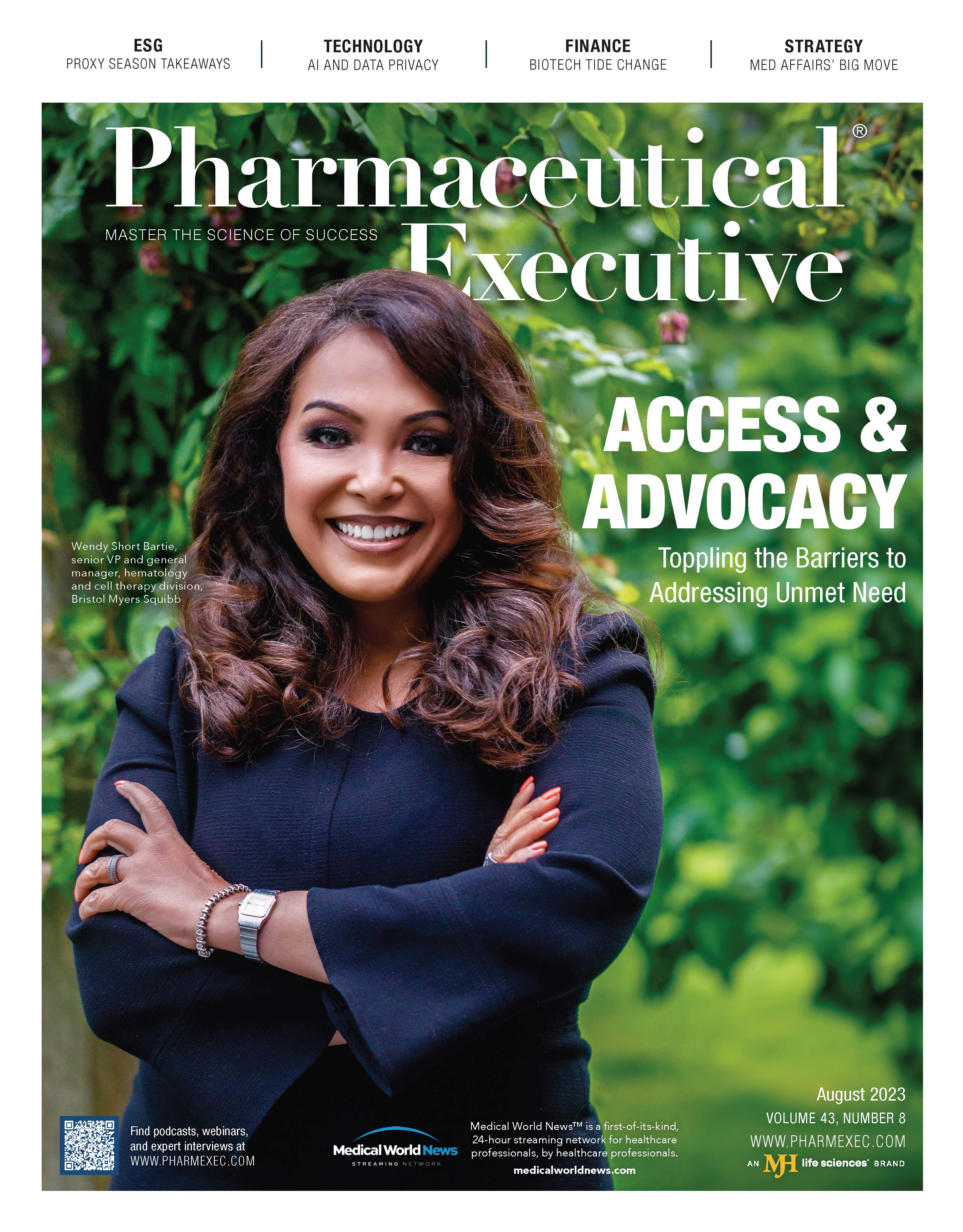- Sustainability
- DE&I
- Pandemic
- Finance
- Legal
- Technology
- Regulatory
- Global
- Pricing
- Strategy
- R&D/Clinical Trials
- Opinion
- Executive Roundtable
- Sales & Marketing
- Executive Profiles
- Leadership
- Market Access
- Patient Engagement
- Supply Chain
- Industry Trends
Bridging the Divide: Medical's Omnichannel Momentum
How pharma medical affairs and commercial teams are synchronizing their capabilities to boost omnichannel marketing strategies and better understand customer engagement needs.
Stacy Hartung
Vice President of Marketing,
Technology, and Data
Solutions
Syneos Health

Over the past few years, omnichannel marketing has become a vital component of many biopharmaceutical companies’ commercial customer engagement strategies. It enables commercial marketing teams to create more personalized experiences for customers by communicating the right message at the right time and through the right channels, and it has become an effective way to increase key performance indicators (KPIs) such as brand share of voice and prescription lift.
As the industry continues to grow omnichannel marketing capabilities, medical affairs teams have begun to explore their potential to reach and communicate with healthcare providers (HCPs) and key opinion leaders (KOLs), requiring a once unheard-of collaboration between medical affairs and commercial functions. As medical affairs teams and commercial teams know from experience, integrating the functions is easier said than done—the divide between the two teams emerged as a result of increasing pressure from regulators to maintain a clear demarcation between medical and commercial functions to prevent potential conflicts of interest. The continued independence and firewall between the content of these two functions remain as important as ever in successfully bringing new biopharmaceutical assets to market.
Suma Ramadas
Executive Vice President
and Global Head of
Medical Affairs
Syneos Health

As these historically separate functions look to engage with HCPs through an omnichannel approach, it is even more critical for them to collaborate closely. When done right, these collaborations will create a streamlined and effective customer experience. To better understand the challenges inherent to integrating digital strategies across medical and commercial initiatives, medical affairs experts from Syneos Health and DHC Group gathered for a roundtable discussion in mid-2023. Ahead are some of their key takeaways.
A tailored approach across functions
Nobel Laureate, psychologist, and economist Herbert A Simon wrote in his book Computers, Communications, and the Public Interest, “[a] wealth of information creates a poverty of attention.” The age of information overload that was ushered in with the dawn of the internet has drained our attention economy and has conditioned us to be less receptive to new information, including the customers we need to reach with both commercial and medical information. To cut through the noise and serve effective messages, teams need to collaborate with a tailored, multifaceted approach to customers where they are on their education journeys.
When done correctly, an integrated strategy has the potential to enable impactful brand continuity and consistency throughout the asset lifecycle. This approach requires identifying synergies between functions—for instance, aligning on consistent design assets and message mapping for all non-branded communication. For example, a medical affairs team might develop resources on disease awareness, treatment guidelines, or clinical research, while the commercial team could work on market research or product positioning. By aligning these activities, the company can ensure a coherent and effective approach to engaging with HCPs, patients, and other stakeholders.
Additionally, medical and commercial teams will need to break down functional silos that have persisted in the past to deliver a unified customer experience and enable increased precision over time as these omnichannel teams better understand the varying needs of their customer segments. This will require a new way of working between functions given the criticality of maintaining a firewall between medical and commercial content. As mentioned, there are some elements that can be shared over the wall to ensure unified execution, such as digital channel and content format preferences as well as understanding customer preferences for field team engagement.
Unified execution
Remaining agile and cognizant of stakeholder learning preferences is crucial to creating an engaging experience and important to selecting the right tools for omnichannel execution. While technologies such as virtual and augmented reality are “cutting edge,” commercial and medical teams may miss engagement objectives if the customer is not ready to learn in that format. What we do know is that according to a recent Veeva Pulse Trends report, 70% of HCPs practicing today are digitally native, meaning they became doctors after the internet went mainstream, and have been using digital technology throughout their entire career. This is reflected in their learning preferences: 77% of HCPs primarily use digital channels for personal learning and development according to a 2022 Indegene study. But it’s not all digital all the time. In findings in a report released by Across Health, 64% of HCPs prefer omnichannel engagement with a medical science liaison and 49% prefer omnichannel engagement with a sales representative.
Data integration is its own complex operation. While removing data silos will be critical to a unified approach, there are issues related to restrictions in sharing certain datasets (e.g., patient data) across functions. Some of these challenges include access to data, best practices around data utilization, and access to tools and stacks. Medical and commercial teams will need to ensure they stay current with and are aligned on evolving local and organizational policies related to customer data privacy and usage. One solution is to create a customer data standard operation procedure (SOP) in partnership with data and compliance teams that guides both medical and commercial teams on individual and engagement data practices for mutually targeted customers.
Delivering user-friendly content for a unified customer experience across medical and commercial functions can be difficult given the often public-facing nature of the content and known compliance challenges. As we know, what is delivered out of the medical function must be distinct from what is generated from the commercial function. Additionally, for medical affairs teams, generating content that is technically and scientifically appropriate while utilizing digital channels and easy-to-use formats sets a high bar for content creators.
Navigating the balance between scientific content that maintains independence on the medical side but is customized to specific segments is testing the comfort zone of the industry. As we strive for cross-functional consistency, legal teams will be on high alert for messaging that appears “too commercial,” resulting in a significant hurdle for today’s medical strategists. Also, segmenting algorithms used for communication strategies and understanding how compliant medical tiering can differ from commercial is critical to an aligned segmenting process. In light of these hurdles, proactive and regular collaboration with your medical review team during omnichannel engagement planning is paramount to ensure seamless, regulation-abiding integration and implementation.
Teams must also consider the content lifecycle of an omnichannel program. Questions to consider include:
- Is the content iterative based on stakeholder preferences?
- Are there evergreen elements to expiring content that can be repurposed?
- When is it appropriate to brand content or keep it unbranded?
The solutions and optimal strategies tied to these questions are still under development. The collaborative efforts of commercial and medical teams, in conjunction with IT and data science/analytics units, will serve as the foundation for future omnichannel operations strategy.
Combining qualitative and quantitative metrics
Measuring the success of an omnichannel strategy will require a fundamental shift away from traditional KPIs, combining qualitative and quantitative metrics for a holistic and comprehensive view.
Strategists should be wary of vanity metrics—interactions that can be measured but don’t necessarily signify a return on investment. These metrics include the number of followers, comments, or views on a promotional video and may not provide a full picture of customer engagement. An effective integrated strategy is better measured on success metrics (e.g., field team execution, medical knowledge gains, product adoption, and customer perception) that are better aligned to customer expectations.
Along the same lines, traditional KPIs grounded in snapshot measurements are becoming increasingly obsolete as customers require longitudinal data measuring changes in perception and behavior over time. Determining effective strategies to measure shifts in perception, especially considering the desire for personalized content across utilized channels, is challenging to define and still in the early stages. However, when successfully implemented, comprehensive measurements would provide a holistic and realistic view of engagement success. In the context of medical and commercial collaboration, one approach to consider is devising KPIs that set each other up for success: what medical outcomes can we measure to pave the way for commercial success? Conversely, which commercial KPIs could signal the need for further education for the medical team?
As is the case with any change, challenging traditional thinking will be vital to harnessing the potential of omnichannel offerings that span across both functions to create a unified customer experience. By facing these challenges together, with close collaboration with other key partners, such as legal/compliance, IT, and data/science analytics teams, omnichannel marketing has the potential to reach customers in new and dynamic ways that will truly resonate along all points of the customer journey. This will require us to take small steps to fundamentally shift the perceptions around how cross-functional teams can compliantly integrate ways of working and the execution of the work itself. With all the pieces in place, we truly believe the effort will be worth it for whom it really matters—the patients who benefit from receiving the best care from a well-informed HCP.
Stacy Hartung is the vice president of marketing, technology, and data solutions at Syneos Health. Suma Ramadas is an executive vice president and global head of medical affairs at Syneos Health.

The Impact of Artificial Intelligence on the Creation of Medicines
October 24th 2024Najat Khan, chief R&D officer, chief commercial officer, Recursion, and Fred Hassan, director, Warburg Pincus, discuss how artificial intelligence can help reduce healthcare costs at the 20th Annual Young & Partners Pharmaceutical Executive Summit held at the Yale Club of New York.
Plan Ahead: Mastering Your AI Budget for 2025 Success
October 9th 2024Generative AI is just one part of the artificial intelligence and machine learning that is being used by life science organizations, emerging as a major area of interest and an area in which costs and ROI are still largely unknown.
